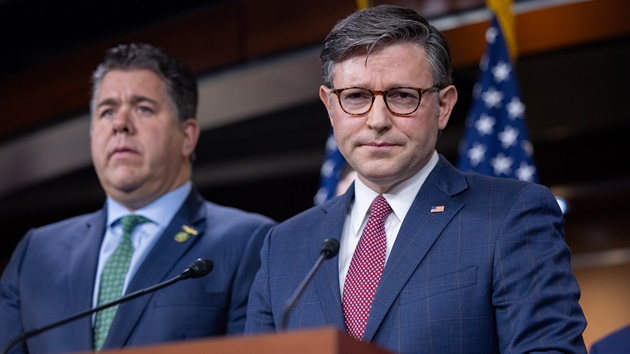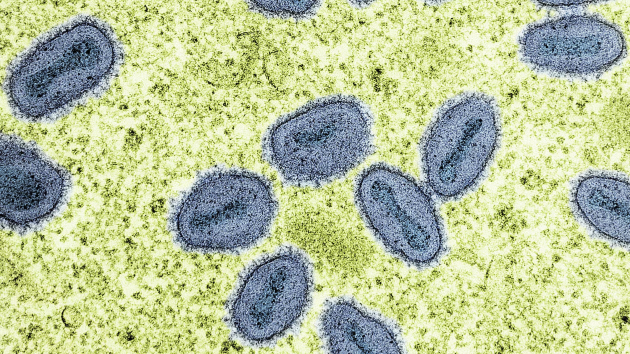Four years later, experts are just beginning to ‘scratch the surface’ of understanding long COVID
Written by ABC Audio ALL RIGHTS RESERVED on March 20, 2024

(NEW YORK) — Millions of Americans are still experiencing long COVID more than four years since the global COVID-19 outbreak was declared a pandemic.
According to the most recent federal Household Pulse Survey, between Jan. 9, and Feb. 5, 6.8% of U.S. adults currently have long COVID and 17.6% have had long COVID.
Using 2020 U.S. Census Bureau estimates, this means 17.5 million adults currently have long COVID and 45.4 million people have ever had long COVID.
Since the early days of the pandemic, scientists have learned a great deal about what puts someone at risk for long COVID, but researchers say we are still “scratching the surface” when it comes to our understanding of what causes the condition or how to treat it.
“We know much more today than we did four years ago; that’s a fact,” Dr. Alba Azola, an assistant professor of physical medicine and Rehabilitation at Johns Hopkins Medicine, told ABC News. “But we do not have clarity on the exact pathophysiology or that mechanism that’s driving those symptoms.”
“We’re just scratching the surface, we’re just beginning to understand what makes those people that develop long COVID different than those people that have COVID and completely recover after,” she added.
What is long COVID?
Long COVID occurs when patients still have symptoms at least four weeks after they have cleared the infection. In some cases, symptoms can be experienced for months or years.
Symptoms vary and can include fatigue, difficulty breathing, headaches, brain fog, joint and muscle pain and continued loss of taste and smell, according to the Centers for Disease Control and Prevention (CDC).
Azola said not all symptoms are visible in every single patient, but they can experience a wide range of them.
Long COVID most often occurs in people who had severe illness but anyone can develop the condition. People who are not vaccinated against COVID-19 are at higher risk of developing long COVID, according to the CDC.
Mystery around what causes long COVID
Scientists are not sure what causes long COVID but have identified risk factors including having underlying conditions or experiencing multi-system inflammatory syndrome due to COVID.
Research has also found that patients with long COVID tend to have lower cortisol levels and lower testosterone levels.
Another theory is that virus particles may become active again, causing people to suffer long-term symptoms.
“What we want, of course, it’s just to be able to diagnose, and to treat,” Dr. Fernando Carnavali, director of the Mount Sinai Center for Post-COVID Care in New York, told ABC News. “We have people that are really suffering with this, brain fog and other symptoms that are significantly impacting the quality of life. And it feels because of that some of [the research] is not enough. But I think that we are on the way.”
Research is also not clear about why some patients recover and others don’t.
New York City resident David Speal, 41, contracted COVID-19 in March 2020. He became seriously ill and was hospitalized at Lenox Hill Hospital. After he was discharged from the hospital, he said he experienced a consistently high heart rate.
It was several months later that he was diagnosed with long COVID. It’s been a long road to recovery, but Speal has regained most of his health since his initial infection.
However, he said his wife is suffering. Speal said she contracted COVID twice — the second time resulting in brain fog so severe that she no longer works, but it’s unclear whether or not she receives disability.
“I’m not 100%. Sometimes, you do a lot, you get really tired, and you can tell like, ‘Okay, you know, this is still, it’s still a part of me, but not to the point where I can’t function,'” he told ABC News. “My biggest question is, well, how did I recover? You know, like, what happened?” We don’t truly know what was the turning point for me when everything went normal.”
Trials still needed for treatments
Because those with long COVID can experience a variety of symptoms, there is no single treatment or cure for the condition.
Patients and health care providers often have to work together to create a personal care plan to manage symptoms.
“We need to remind ourselves that without really knowing the pathophysiology of the disease, without knowing biomarkers, it’s complex,” Carnavali said. “There are certain things that people been trying and some of these treatments do potentially have some benefit.”
The National Institutes of Health (NIH) RECOVER Initiative launched several clinical trials of potential treatments for long COVID.
Currently, the only medications or treatments that can be used aim to alleviate some long COVID symptoms, but aren’t specifically for long COVID. Speal said he was prescribed propranolol, a medication that slows down the heart rate and makes it easier for the heart to pump blood.
Speal said he took an extremely low dose of the medicine for about two years until he got to a point where he no longer needed to take the medication.
Azola said that while she expects that clinical trials will eventually result in effective treatments, she urges patients and the general public to be patient.
“The reality is that the science is moving forward, but it’s going to take a long time for that to translate into clinical improvement or treatment,” she said. “So, there’s a big canyon between science and clinical treatments that are available to us.”
‘You have to get comfortable with not knowing’
Doctors say that one of the most difficult things about treating long COVID patients is not having an answer about why they’re feeling the way they feel or how to best treat them.
“I would probably say that’s one of the hardest things about being a physician that takes care of this patient population,” Azola said. “Because as physicians, we want to help people, we want to get them better, we want to have those answers. But in the case of long COVID, it’s quite frustrating. We don’t have those answers.”
“You really need to kind of get comfortable with not knowing … but also being curious and partnering with my patients to try to find creative ways that can be beneficial to them or finding creative ways to make their quality of life better,” she added.
Azola said she currently helps patients better manage symptoms and pain so that, even if they are not free for long COVID symptoms, they can at least participate in their day-to-day activities.
Speal said it’s often hard to describe to other people who have not gone through COVID what he may be experiencing, even his own family and friends.
“People say, ‘No, it’ll be okay’ or ‘Try this, do that’ but it’s like the only way you can truly understand long COVID is if it happens to you, and I wouldn’t wish that on anybody,” he said. “The reality is it’s so hard to explain to people, because every case is totally different.”
Azola also cautioned family members and caregivers of long COVID patients to not dismiss them or how they feel.
“At times, by pushing themselves too much, or trying to go beyond their energy envelope, they can actually end up harming themselves and losing function,” she said. “So, it is certainly important for families and people that have caregivers to continue to help them because that’s the only way they’re gonna be able to get better.”
Copyright © 2024, ABC Audio. All rights reserved.

 KVSP
KVSP 



